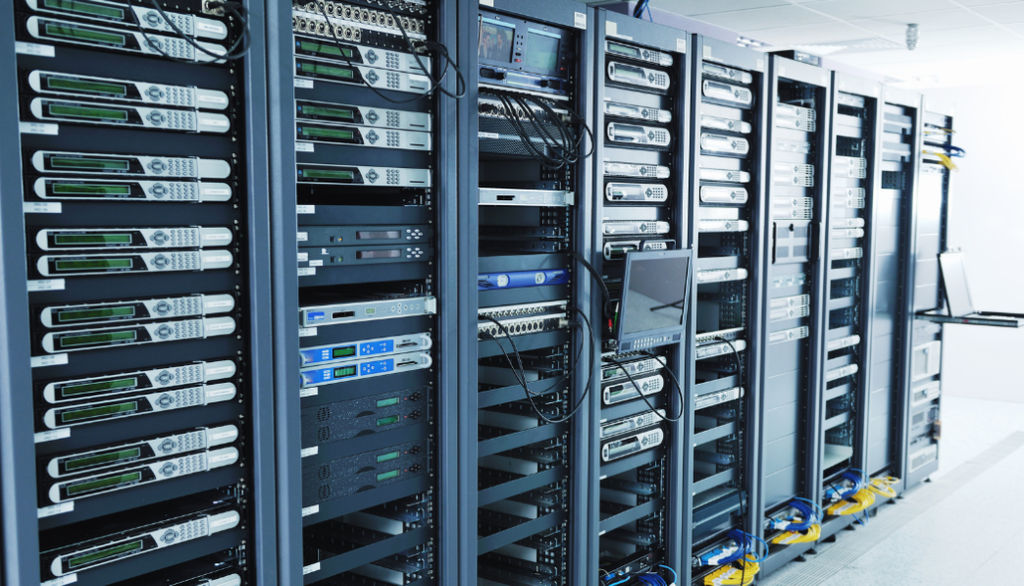Network Rack Cabinet
Picture walking into a state-of-the-art data center where every cable has its place, every server hums efficiently, and the entire network infrastructure operates like a well-oiled machine. At the heart of this organized chaos stands the unsung hero: the network rack cabinet.
A network rack cabinet serves as the backbone of modern IT infrastructure, providing secure housing for servers, switches, routers, and other critical equipment. These metal frameworks aren’t just storage solutions—they’re the foundation that keeps businesses running smoothly, from small startups to Fortune 500 companies.
Whether you’re setting up your first server room or upgrading an existing data center, understanding network rack cabinets can save you thousands of dollars and countless headaches. This comprehensive guide will walk you through everything you need to know, from basic concepts to advanced planning strategies that even seasoned IT professionals often overlook.

Understanding Network Rack Cabinets
The Foundation of Modern IT
Network rack cabinets represent far more than simple metal boxes. These specialized enclosures follow strict industry standards, with the rack unit (RU or U) serving as the universal measurement system. One rack unit equals exactly 1.75 inches in height, creating a standardized framework that allows equipment from different manufacturers to work together seamlessly.
Most data centers rely on the standard 19-inch width specification, ensuring compatibility across virtually all network equipment. This standardization revolutionized the industry, much like how shipping containers transformed global commerce by creating universal dimensions.
Standard Rack Heights and Their Applications
The 42U rack cabinet has become the gold standard in enterprise environments, standing approximately 6 feet tall and offering maximum equipment capacity. However, different scenarios call for different solutions. Smaller offices often prefer 24U or 12U cabinets, which provide adequate space while fitting comfortably in limited floor areas.
Wall mount racks serve specialized purposes in environments where floor space is premium. These compact solutions typically range from 6U to 12U and work perfectly for small network closets or point-of-presence installations.
Open Frame vs. Enclosed Designs
Open frame server racks prioritize airflow and accessibility, making them ideal for controlled data center environments where security comes from room-level access controls. These designs allow maximum ventilation and easy cable management, though they offer minimal protection from environmental factors.
Enclosed racks provide comprehensive protection through solid or perforated panels, locking mechanisms, and weatherproofing options. The choice between open frame and enclosed designs often depends on security requirements, environmental conditions, and maintenance preferences.
Types of Network Rack Cabinets
Server Racks: The Workhorses
Server racks handle the heavy lifting in most data centers, literally and figuratively. These robust cabinets typically support 1,000 to 3,000 pounds of equipment, with reinforced frames and adjustable depth configurations. Modern server racks accommodate everything from 1U pizza box servers to full-height blade chassis.
The depth of server cabinets has evolved significantly as equipment has grown more sophisticated. Standard depths now range from 600mm for basic network equipment to 1200mm for high-density server configurations. This flexibility allows organizations to standardize on cabinet types while accommodating diverse equipment requirements.
Network Equipment Racks: Precision Housing
Network racks focus on cable management and port accessibility rather than raw weight capacity. These cabinets feature extensive cable management systems, including horizontal and vertical cable organizers, patch panel mounting options, and dedicated spaces for network switches and routers.
The design philosophy differs significantly from server racks. While server racks emphasize structural strength, network racks prioritize organization and accessibility. Technicians need quick access to patch panels and switches for troubleshooting and maintenance, making thoughtful cable routing essential.
Wall Mount Solutions: Space-Efficient Alternatives
Wall mount racks solve space constraints in smaller installations. These compact solutions mount directly to wall studs or concrete surfaces, providing secure equipment housing without consuming valuable floor space. Weight capacity typically ranges from 100 to 400 pounds, suitable for switches, patch panels, and small servers.
Installation requires careful attention to wall structure and weight distribution. Proper mounting ensures long-term reliability and prevents equipment damage from inadequate support.
Specialized Rack Types
Mobile racks serve temporary installations and demo environments, featuring heavy-duty casters and secure locking mechanisms. These portable solutions allow equipment transport between locations while maintaining proper mounting standards.
Outdoor and weatherproof cabinets protect equipment in harsh environments, incorporating climate control, moisture barriers, and temperature regulation. These specialized enclosures enable network deployment in previously impossible locations.
Key Features and Components
Frame Construction and Materials
Quality rack construction starts with heavy-duty steel frames, typically using 14 to 16-gauge steel for maximum strength and durability. The frame design directly impacts weight capacity, with 4-post configurations providing superior load distribution compared to 2-post alternatives.
Manufacturing quality varies significantly between vendors, with premium cabinets featuring precision-welded joints and powder-coated finishes for long-term corrosion resistance. The investment in quality construction pays dividends through reduced maintenance and extended service life.
Mounting Systems and Adjustment
Adjustable mounting rails accommodate equipment with varying depth requirements, while square holes provide tool-free installation for most standard equipment. Some cabinets feature both square and round mounting options for maximum compatibility.
The rail adjustment system determines how quickly technicians can reconfigure racks for new equipment. Quality systems use precision-machined components that maintain alignment under heavy loads, preventing binding and ensuring smooth operation.
Door and Panel Options
Perforated doors balance security with airflow requirements, typically featuring 65-80% open area for optimal ventilation. Solid doors provide maximum security but require careful consideration of cooling requirements. Glass doors offer visual access while maintaining environmental protection.
Side panels play crucial roles in airflow management and security. Removable panels facilitate maintenance access, while lockable panels enhance security. The choice depends on specific operational requirements and security policies.
Cable Management Systems
Professional cable management transforms chaotic installations into organized, maintainable systems. Horizontal cable managers mount between equipment, providing organized pathways for network cables. Vertical managers route cables between rack levels while maintaining proper bend radius requirements.
Ring-style managers offer flexibility for complex routing, while enclosed managers provide additional protection for sensitive cables. The investment in proper cable management reduces troubleshooting time and improves system reliability.
Sizing and Capacity Planning
Determining Space Requirements
Proper rack sizing starts with detailed equipment inventories and future growth projections. Each piece of equipment specifies its rack unit requirements, but organizations must account for cable management, power distribution, and cooling equipment that also consume rack space.
A common planning mistake involves filling racks to capacity without considering maintenance access or future upgrades. Industry best practices suggest limiting rack utilization to 70-80% capacity, allowing room for growth and proper airflow.
Weight Capacity Considerations
Static weight ratings indicate maximum safe loads for stationary installations, while dynamic ratings apply to mobile or adjustable configurations. Understanding these distinctions prevents equipment damage and ensures technician safety.
Weight distribution matters as much as total capacity. Concentrating heavy equipment at the bottom of racks improves stability, while spreading loads across multiple mounting points prevents frame stress and deformation.
Future Expansion Planning
Technology refresh cycles typically range from 3-7 years, making expansion planning crucial for long-term success. Organizations should evaluate current space utilization, projected growth rates, and technology trends when selecting cabinet sizes.
The trend toward higher-density equipment means more computing power per rack unit, but also increased power and cooling requirements. Modern planning must balance space efficiency with infrastructure capabilities.
Installation Considerations
Site Preparation Requirements
Proper rack installation begins before equipment arrives on site. Floor load calculations ensure structural adequacy, while ceiling height measurements confirm adequate clearance for cable routing and maintenance access.
Power and cooling infrastructure must align with rack locations, requiring coordination between IT teams and facility managers. Pre-installation site surveys identify potential issues before they become expensive problems.
Seismic and Structural Considerations
Earthquake-prone regions require specialized seismic brackets and bracing systems that prevent rack tipover during seismic events. These safety systems protect both equipment and personnel while maintaining operational integrity.
Building codes in many areas mandate seismic protection for tall equipment installations. Compliance ensures safety and avoids potential liability issues during emergencies.
Accessibility and Maintenance Planning
Maintenance clearances around racks enable safe and efficient service work. Industry standards recommend minimum 3-foot clearances on the front and rear of racks, with additional space for high-traffic areas.
Hot aisle/cold aisle configurations optimize cooling efficiency while maintaining necessary access for maintenance. These layouts require careful planning but deliver significant energy savings and improved equipment reliability.

Cable Management and Organization
Professional Cable Routing Strategies
Effective cable management begins with understanding signal types and their specific requirements. Power cables require separation from data cables to prevent interference, while fiber optic cables demand careful bend radius management to prevent signal loss.
Horizontal cable managers provide organized pathways between equipment levels, while vertical managers route cables along rack sides. The combination creates three-dimensional organization systems that accommodate complex routing requirements.
Power Distribution Integration
Power distribution units (PDUs) integrate seamlessly with cable management systems, providing convenient power access while maintaining organized cable routing. Modern PDUs feature outlet spacing that accommodates various plug types without blocking adjacent outlets.
Redundant power feeds require careful planning to ensure proper load distribution and failover capability. Color-coded power cables help technicians identify power sources during maintenance and emergency procedures.
Documentation and Labeling
Professional labeling systems enable rapid identification of cables and connections during troubleshooting. Standardized labeling conventions prevent confusion and reduce service time, especially when multiple technicians work on the same systems.
Documentation should include cable routes, connection diagrams, and power distribution layouts. Digital documentation systems enable remote access and version control, improving team coordination and maintenance efficiency.
Cooling and Ventilation Solutions
Airflow Management Principles
Proper airflow management creates defined hot and cold zones that optimize cooling efficiency. Equipment intakes face cold aisles while exhausts direct hot air toward return paths, creating efficient thermal management systems.
Blanking panels fill unused rack spaces, preventing hot air recirculation that reduces cooling efficiency. These inexpensive accessories can significantly improve cooling performance and reduce energy costs.
Cooling System Integration
Rack-level cooling solutions provide targeted thermal management for high-density installations. These systems integrate directly with rack infrastructure, offering precise temperature control where traditional room cooling falls short.
Containment systems create physical barriers between hot and cold zones, dramatically improving cooling efficiency. Hot aisle containment captures waste heat at the source, while cold aisle containment delivers cool air directly to equipment intakes.
Energy Efficiency Optimization
Variable speed fans adjust cooling output based on actual thermal loads, reducing energy consumption during periods of lower utilization. These systems deliver significant operational savings while maintaining optimal equipment temperatures.
Temperature monitoring enables proactive thermal management and identifies potential problems before they cause equipment failures. Modern monitoring systems provide real-time alerts and historical trending data for optimization analysis.
Security Features and Access Control
Physical Access Controls
Multi-level security systems provide graduated access based on user credentials and authorization levels. Electronic locks enable audit trails and remote management, while mechanical locks provide failsafe access during power outages.
Biometric access controls eliminate shared key problems while providing detailed access logging. These advanced systems track who accessed which racks and when, supporting security policies and compliance requirements.
Monitoring and Alarm Systems
Environmental monitoring detects temperature, humidity, and other conditions that could affect equipment performance. These systems provide early warning of potential problems and can trigger automatic responses to protect critical systems.
Door position sensors detect unauthorized access attempts and integrate with security systems for comprehensive facility protection. Combined with video surveillance, these systems provide complete physical security coverage.
Compliance and Standards
Many industries require specific security measures for IT equipment protection. Healthcare organizations must comply with HIPAA requirements, while financial institutions face additional regulatory scrutiny for data protection measures.
Government and defense contractors operate under strict security protocols that dictate physical protection requirements. Understanding compliance obligations early in the planning process ensures proper security implementation.
Selection Criteria and Best Practices
Vendor Evaluation Framework
Quality manufacturers provide comprehensive specifications, including weight capacities, environmental ratings, and compliance certifications. Established companies offer better long-term support and parts availability than newcomers or overseas suppliers with limited presence.
Total cost of ownership includes initial purchase price, installation costs, and ongoing maintenance requirements. Premium cabinets often justify higher initial costs through improved reliability and reduced service needs.
Integration Considerations
Compatibility with existing infrastructure affects installation costs and timeline. Standard mounting specifications ensure equipment compatibility, while proprietary systems may lock organizations into specific vendor relationships.
Future technology trends influence current purchasing decisions. The shift toward edge computing and higher-density equipment suggests that flexibility and expandability become increasingly important selection criteria.
Budget Planning Strategies
Lifecycle cost analysis provides more accurate budget projections than simple purchase price comparisons. Organizations should evaluate energy costs, maintenance requirements, and replacement schedules when comparing options.
Bulk purchasing opportunities often provide significant savings for multi-rack installations. However, organizations should balance cost savings against the risk of technology obsolescence and changing requirements.
Common Mistakes to Avoid
Planning and Design Errors
Underestimating future growth requirements forces expensive upgrades or complete rack replacements. Conservative planning with 20-30% excess capacity provides flexibility for unexpected requirements and technology changes.
Inadequate cable management planning creates maintenance nightmares and increases troubleshooting time. Professional cable management pays dividends throughout the installation lifecycle through improved reliability and reduced service costs.
Installation and Configuration Issues
Improper weight distribution causes frame stress and potential equipment damage. Heavy equipment should be mounted low in racks, while proper load distribution prevents concentration of weight on single mounting points.
Inadequate cooling planning leads to equipment overheating and reliability problems. Organizations should evaluate thermal requirements during the design phase rather than attempting to solve cooling problems after installation.
Operational and Maintenance Oversights
Poor documentation creates dependency on specific individuals and complicates troubleshooting efforts. Standardized documentation practices enable any qualified technician to work on systems effectively.
Neglecting preventive maintenance allows small problems to become major failures. Regular inspections identify potential issues before they cause system downtime or equipment damage.
Future Trends and Emerging Technologies
Edge Computing Impact
The shift toward edge computing drives demand for smaller, distributed rack installations. These deployments require different approaches to cooling, security, and remote management compared to traditional centralized data centers.
Micro data centers integrate computing, storage, and networking in compact packages suitable for edge deployment. These solutions challenge traditional rack design approaches and require new thinking about infrastructure integration.
Smart Rack Technologies
Intelligent monitoring systems provide unprecedented visibility into rack conditions and equipment performance. These systems enable predictive maintenance and optimization strategies that reduce operational costs and improve reliability.
Automation integration allows racks to participate in larger facility management systems, automatically adjusting cooling and power based on actual utilization patterns. This integration delivers operational efficiency gains and improved resource utilization.
Sustainability Initiatives
Energy efficiency requirements drive innovations in cooling and power management systems. Organizations increasingly evaluate environmental impact alongside traditional performance metrics when selecting infrastructure components.
Circular economy principles encourage equipment reuse and recycling, affecting purchasing decisions and end-of-life planning. Sustainable practices provide cost benefits while supporting corporate environmental objectives.
Advanced Implementation Strategies
Modular Design Approaches
Modular rack systems enable rapid deployment and easy reconfiguration as requirements change. These systems use standardized components that can be combined in various configurations to meet specific needs.
Prefabricated solutions reduce installation time and ensure consistent quality across multiple locations. These approaches particularly benefit organizations with multiple sites or rapid expansion requirements.
Integration with Building Systems
Modern rack installations integrate with building management systems for coordinated control of power, cooling, and security systems. This integration enables facility-wide optimization and improved operational efficiency.
Emergency systems integration ensures proper shutdown sequences during power failures or other emergencies. These systems protect both equipment and personnel while minimizing damage from unexpected events.
Conclusion
Network rack cabinets form the foundation of reliable IT infrastructure, supporting everything from small office networks to massive cloud computing installations. Success depends on thorough planning, quality components, and professional installation practices that consider both current needs and future requirements.
The investment in proper rack infrastructure pays dividends through improved reliability, easier maintenance, and enhanced security. Organizations that approach rack selection strategically position themselves for long-term success in an increasingly digital world.
Whether upgrading existing facilities or building new installations, the principles covered in this guide provide a solid foundation for making informed decisions. Remember that rack cabinets represent long-term investments that will support critical business systems for many years—choose wisely.

t33jol